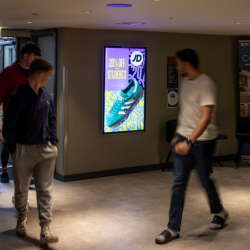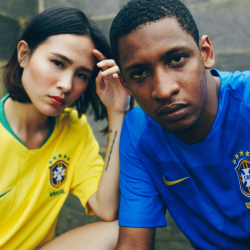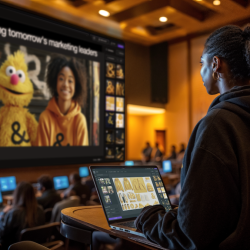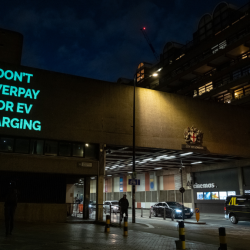AI, digital transformation, and sustainability have revolutionised industries across the board, from entry-level to luxury segments, and fashion is no exception
Given the immense commercial weight of the fashion sector, combined with the transformative potential of technology and its profound socio-economic and environmental implications, it’s crucial to explore how these forces are shaping fashion in Asia — a region where tradition and innovation are constantly intersecting. The lines between digital and physical fashion blur more each day, while the battle between fast and slow fashion rages on. Sustainability, artificial intelligence, and social media are now shaping consumer behaviours in ways previously unimaginable. But what does this mean for the diverse fashion markets of Asia?
A new digital dawn
Picture this: the clack of heels on the runway, but instead of fabric swaying under spotlights, its pixels shimmering on virtual garments. Digital fashion is more than a fleeting trend; it’s a fundamental shift that’s reshaping Asia’s fashion landscape. Countries like China and South Korea, with their cutting-edge technological infrastructure, have become trailblazers in this space. The rise of AI-driven fashion platforms, like Hong Kong’s AiDa, has brought digital couture into the mainstream.
In South Korea, a dynamic playground for luxury and contemporary brands, virtual fashion is merging with the physical as brands experiment with showcasing digital runway collections alongside tangible pieces. Balenciaga, known for its innovative approach, has tested this concept through collaborations like the one with Fortnite. Similarly, Burberry has launched digital collections alongside traditional physical ones, offering both in markets such as South Korea and China. This contrasts starkly with countries like India, where digital fashion is still a novelty, albeit a promising one. Here, traditional retail experiences remain dominant, though innovations like virtual fitting rooms from platforms such as Myntra and eyewear brand Lenskart are slowly finding their way into everyday shopping. Additionally, retailers like Aditya Birla’s ‘StyleUp’ are experimenting with AR-based fitting rooms, indicating a gradual shift towards integrating digital technology into the shopping experience. Nonetheless, the potential for AI in streamlining operations and enhancing personalisation is clear, especially as India’s luxury market — bolstered by the likes of Manish Malhotra and Tarun Tahiliani — heats up.
Fast fashion vs. sustainability
The environmental impact of fashion is no longer an elephant in the room; it’s front and centre. Asia’s position as a global production hub, particularly for fast fashion, brings with it undeniable challenges. The speed and volume of production in China, Bangladesh, and Vietnam cater to the demand for affordable, trend-driven fashion. However, these rapid cycles have sparked increasing concern over sustainability. Yet in places like Japan, sustainability has moved from a talking point to a key selling feature.
Slow fashion is gaining ground, with brands focusing on minimalism, high-quality craftsmanship, and durability. Japanese fashion houses such as MUJI and Comme des Garçons embody this ethos, creating timeless collections that stand in stark contrast to the ephemeral nature of fast fashion. Likewise, as Singapore’s consumers increasingly lean towards niche luxury labels that prioritise sustainability, brands like Ong Shunmugam, known for blending traditional Southeast Asian textiles with contemporary designs, and In Good Company, offering minimalist, high-quality pieces, are gaining traction, even as the broader luxury market contends with fatigue. Interestingly, China’s younger consumers, particularly Gen Z, are starting to display more ‘rational spending’ habits, opting for quality over quantity. Despite China’s reputation as a fast fashion powerhouse, there is a visible shift toward responsible consumption. As economic uncertainties grow, these younger buyers are focusing on purchases that reflect both their personal values and a growing awareness of sustainability.
AI: The fabric of the future
AI in fashion? It’s no longer a futuristic dream but a practical reality that’s revolutionising the industry in Asia. From virtual stylists to predictive trend forecasting, AI is enabling brands to tailor the shopping experience in unprecedented ways. Chinese retail giants like Alibaba and JD.com have incorporated AI-driven platforms that offer personalised recommendations and seamless online-to-offline shopping experiences. South Korea, with its tech-savvy populace, is another leader in AI adoption. Luxury and contemporary brands are leveraging AI to anticipate consumer desires and fine-tune their collections.
Yet, while AI enhances convenience, it also drives sustainability efforts, helping brands to forecast demand more accurately and avoid the notorious problem of overproduction. In fact, there is growing interest in how AI can help brands move toward circularity, reducing waste by managing inventory more efficiently and offering insights into how to prolong the life of garments. The flip side, however, lies in markets like India, where AI’s adoption is still in its early stages. Here, the luxury couture market is fiercely competitive, but brands are just beginning to explore the possibilities of AI, from smart supply chains to personalised consumer interactions.
As luxury couture heats up, it will be interesting to see how quickly the sector embraces AI to stay competitive.
Social shopping and the power of influence
It’s impossible to talk about fashion today without mentioning the influence of social media. Social shopping — where consumers purchase directly through platforms like Instagram, WeChat, and TikTok — has taken Asia by storm, particularly in China.
The integration of influencers and brands on social media platforms has created a community-driven shopping experience, making purchases more interactive and personal. In fact, platforms like WeChat are so deeply ingrained in the Chinese shopping experience that they’ve become pivotal in driving fashion sales. Korea too is seeing a similar trend, with its influencers playing a significant role in elevating local designers to international fame. The country has evolved into a trendsetting hub, where KOLs like globally recognised Irene Kim and Aimee Song, with her strong presence in Asia, can single-handedly dictate fashion trends.
Contrast this with Singapore, where luxury fatigue has begun to set in. Here, brands are shifting their strategies to focus on niche markets and highly curated shopping experiences that offer more than just a logo. Instead, they’re tapping into personalisation and storytelling — elements that social shopping platforms are perfectly poised to amplify.
The road ahead
So, what’s next for fashion in Asia? The future lies in how well brands can balance tradition with innovation, particularly in an era where digital and physical worlds are rapidly converging. AI, sustainability, and social media will continue to be at the forefront, driving both disruption and opportunity.
In South Korea and China, expect digital fashion to become even more intertwined with the physical, as virtual garments and NFTs become mainstays of fashion weeks and beyond. Luxury brands like Gucci, with its virtual sneakers, and Dolce & Gabbana, launching NFT collections alongside physical garments, are leading this trend, appealing to consumers in both countries. Meanwhile, India and Southeast Asia will continue their gradual embrace of these technologies, seeking to balance modernity with their rich retail traditions.
In the end, fashion in Asia is as diverse and dynamic as the region itself — a space where the old and the new meet in the most unexpected and exciting ways. Fashion, darling, is not just about what you wear — it’s about how you experience it, both online and off.
Featured image: Katelyn Whitson / Pexels




























